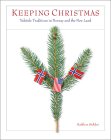|
Keeping Christmas
It is a good thing to observe Christmas day. The mere marking of times and seasons, when men agree to stop work and make merry together, is a wise and wholesome custom. It helps one to feel the supremacy of the common life over the individual life. It reminds a man to set his own little watch, now and then, by the great clock of humanity which runs on sun time. But there is a better thing than the observance of Christmas day, and that is, keeping Christmas. Are you willing to forget what you have done for other people, and to remember what other people have done for you; to ignore what the world owes you, and to think what you owe the world; to put your rights in the background, and your duties in the middle distance, and your chances to do a little more than your duty in the foreground; to see that your fellowmen are just as real as you are, and try to look behind their faces to their hearts, hungry for joy; to own that probably the only good reason for your existence is not what you are going to get out of life, but what you are going to give to life; to close your book of complaints against the management of the universe, and look around you for a place where you can sow a few seeds of happiness—are you willing to do these things even for a day? Keeping Christmas Then you can keep Christmas. Are you willing to stoop down and consider the needs and the desires of little children; to remember the weakness and loneliness of people who are growing old; to stop asking how much your friends love you, and ask yourself whether you love them enough; to bear in mind the things that other people have to bear in their hearts; to try to understand what those who live in the same house with you really want, without waiting for them to tell you; to trim your lamp so that it will give more light and less smoke, and to carry it in front so that your shadow will fall behind you; to make a grave for your ugly thoughts and a garden for your kindly feelings, with the gate open—are you willing to do these things even for a day? Then you can keep Christmas. Are you willing to believe that love is the strongest thing in the world—stronger than hate, stronger than evil, stronger than death—and that the blessed life which began in Bethlehem nineteen hundred years ago is the image and brightness of the Eternal Love? Then you can keep Christmas. And if you keep it for a day, why not always? But you can never keep it alone. (by HENRY VAN DYKE - From "The Spirit of Christmas."] Keeping Christmas. The modern Norwegian-American Christmas — celebrated with family feasts of lutefisk, lefse, römmegröt, rull, and fruit soup, observed in homes where trees are decorated with straw ornaments, flags, and heart-shaped baskets—is a warm and regenerative family holiday for millions of Americans whose ancestors came from Norway. It is the time to carry on customs whose origins have been lost in the past.
Kathleen Stokker’s Keeping Christmas: Yuletide Traditions in Norway and the New Land brings home the stories of Christmas customs in Norway and America. With fascinating details, with scores of accounts of ancient and modern Christmases, with recipes and photographs, this book reminds Norwegians and Norwegian Americans of their connections to each other and explains how their celebrations differ on this most holy of Christian holidays. In telling readers about Norwegian folklore, she illuminates for them the cultural history of both countries. Stories about the customs: Lutefisk, the smelly, gelatinous fish loved by some Norwegian Americans and valued by many more, is a reminder of fasting during Advent and of the difficulties overcome by immigrants. To the surprise of modern Norwegians, julebukking—Christmas mumming—was widely practiced in the midwestern United States, where it is still enjoyed in a few communities. The marzipan Christmas pig is a reminder that the season of festive consumption began with the fall slaughter, which provided the rare chance to eat fresh meat. Norwegian flags hanging on a American tree do more than commemorate the Old Land; they were first used on Norwegian trees as the country gained independence. Well into the nineteenth century, rural Norwegians feared the terrible oskorsrei, spirits who stole horses and kidnapped people who did not have special protection on Christmas Eve. Christmas in Norway would not be complete without the nisse, the benevolent farm spirit, given a bowl of porridge at Christmas time to thank him for his protection during preceding year and to ensure its continuation in the year to come. In medieval times, Norwegian peasants were required to brew beer at Christmas time on pain of a fine or confiscation of property.
|



